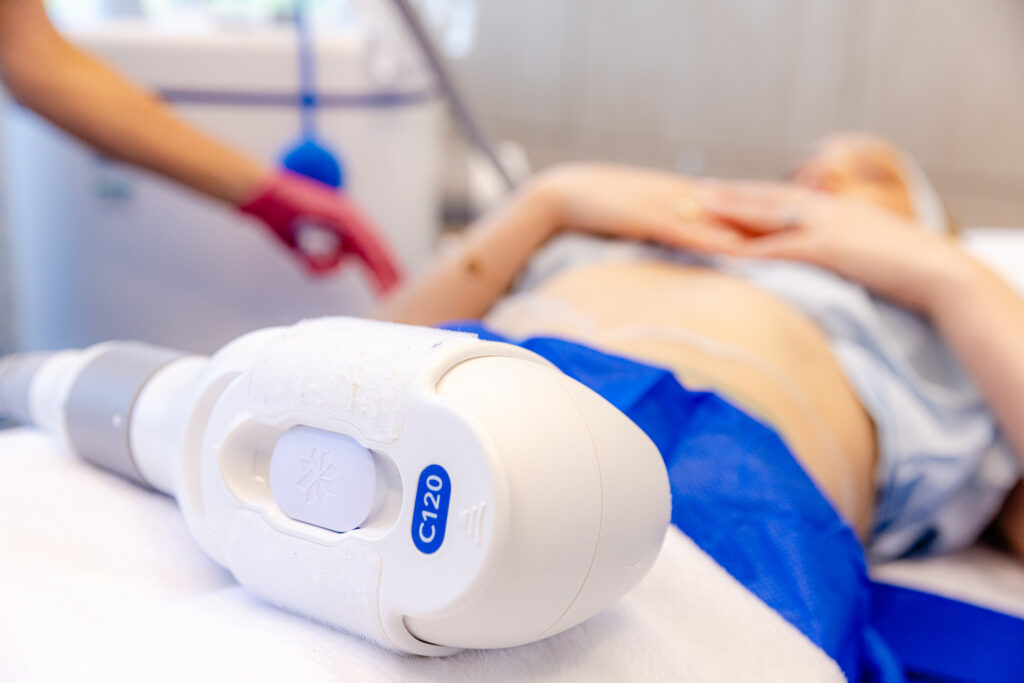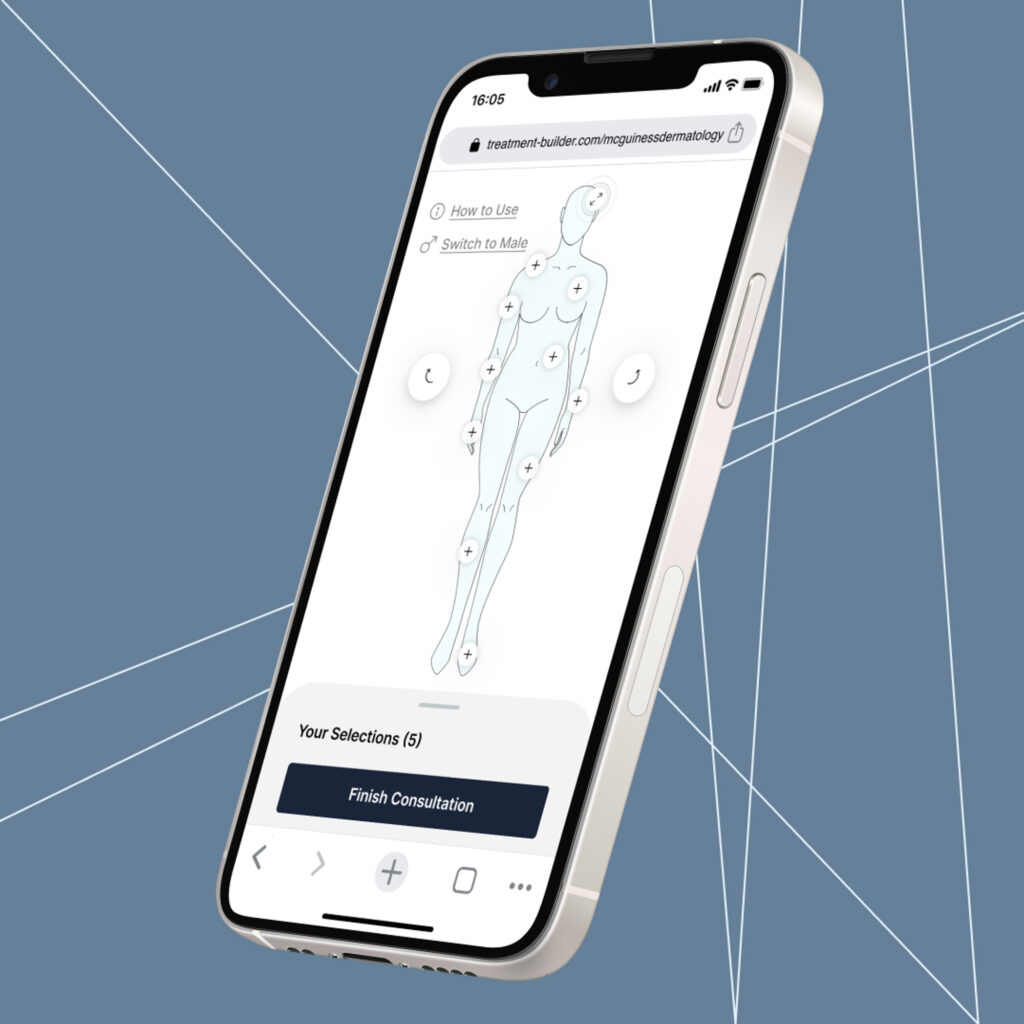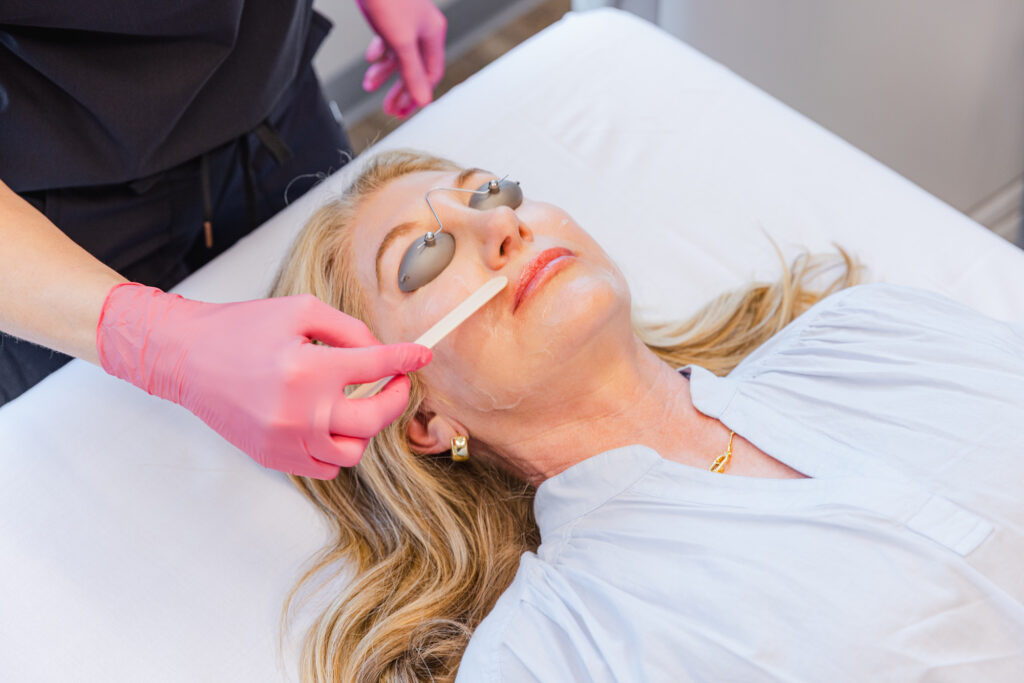
Redness, bumps, and flushing in the face are concerns many of our rosacea patients share with us. We have to be honest: rosacea remains a mystery for derms, researchers, and medical professionals. Researchers continue exploring why some individuals develop rosacea, even with similar skin, health, and allergy profiles to those who don’t. With no known cause, finding a cure proves equally as difficult to find.
But hope is not lost when you come to McGuiness Dermatology & Plastic Surgery to visit a rosacea dermatologist in Frisco. Despite the mystery surrounding rosacea, knowledge of triggers and lifestyle factors allows us to better assist patients with flare-ups.
And while experts continue looking for a cure, we can certainly help patients manage their symptoms and calm the redness. In this article, we outline what we do know about rosacea and how we help you manage the symptoms.
What is rosacea?
Rosacea is a chronic skin condition that affects the face, especially the nose, cheeks, and forehead. This appears as persistent redness, acne-like bumps and pimples, and visible blood vessels. Patients with rosacea may also experience:
- Eye irritation
- Burning or stinging sensations
- Swelling
- Thicker skin
- Dry or rough skin
- Raised red patches
On lighter skin, this condition is more noticeable due to clearer visibility of redness and flushing. But rosacea occurs on light and dark skin tones, and because early flushing might be missed, these individuals face a greater chance of worsening symptoms. For patients with darker skin tones, visit a rosacea dermatologist in Frisco if you notice these symptoms:
- A persistent warm feeling on your face
- Dry, swollen skin
- Patches of darker skin
- Acne-like breakouts resistant to acne treatments
- Yellowish-brown bumps around your eyes and mouth
- Swelling and thickening of the skin on your nose, cheeks, chin, or forehead
- A dusky brown discoloration to your skin
While it most commonly begins any time after the age of 30, anyone can develop the condition at any age. When you visit your dermatologist, we will discuss common triggers that lead to rosacea flare-ups.
Inflammation: A Likely Culprit for Rosacea
Researchers have found potential links between inflammation and rosacea. Inflammation is your immune system’s short-term response to injury and defense against infection. Unfortunately, in chronic cases, your body mistakenly attacks healthy skin cells with inflammatory cells meant for protection, even without a real threat.
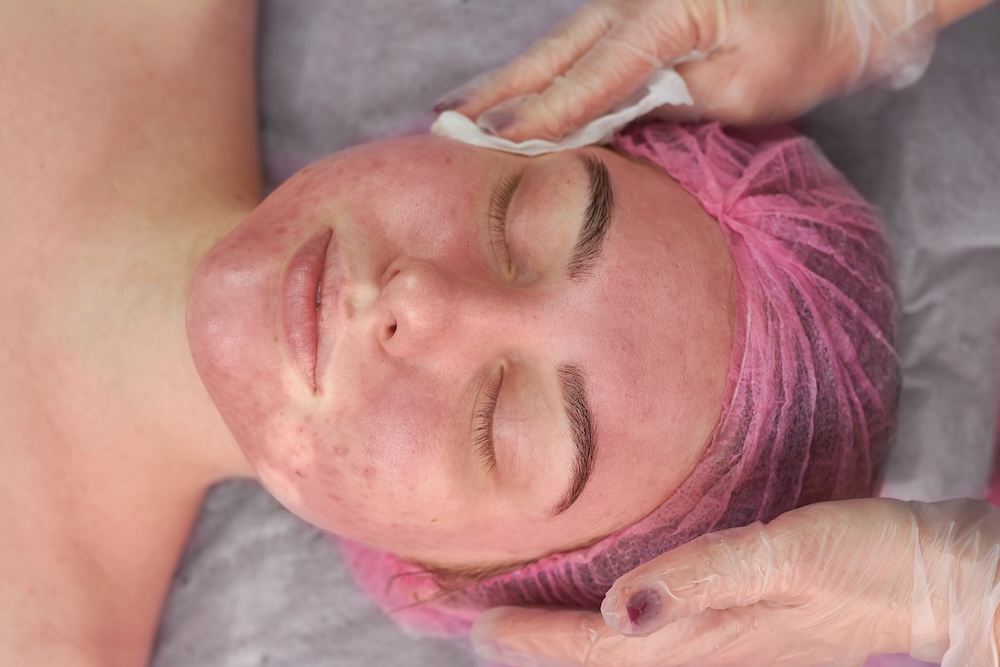
People who have rosacea could be experiencing an immune system overreaction to environmental or internal temperature fluctuations. For this reason, your dermatologist may ask you to identify certain triggers for your flare-ups.
Potential Triggers for Rosacea
Triggers for rosacea are very specific to every individual. That’s why it’s impossible to name all triggers for the estimated 415 million people affected by rosacea worldwide. But our rosacea dermatologist in Frisco can name a few common triggers to look out for.
Food Triggers
Many rosacea patients notice a flare-up when eating foods high in histamine, a chemical made in the body to regulate inflammatory responses. In some cases, the body can’t break down histamines as well as it should, causing a range of symptoms to show on your skin and in your body. Products that involve aging or fermentation contain a large amount of histamine. These include:
- Yogurt
- Cheese
- Processed meat
- Sauerkraut
- Soy sauce
- Spinach
- Red wine
Spicy foods also worsen rosacea symptoms for some patients because they contain capsaicin, which can activate a process called vasodilation. When consumed, spicy foods can widen the blood vessels, allowing heat to rush to the skin and face.
Hot beverages, like coffee and tea, can also trigger vasodilation. We recommend waiting until your drink reaches room temperature, or swapping a piping-hot drink with an iced alternative instead.
It helps to keep a food diary and note when you experience flare-ups. This can help us determine which foods you should avoid to prevent worsening symptoms. Bring this list to your dermatology visit so we can discuss a new dietary plan for you.
Weather-Related Triggers
Overexposure to the sun, or warm temperatures from a sauna or bath, may trigger an outbreak. A rosacea dermatologist in Frisco will advise avoiding direct sun exposure and staying cool to ease the effects of humidity.
Strong winds and cold temperatures can also chafe your skin, exacerbating dryness and further irritating your eyes.
Seasonal changes bring airborne allergens, dry air, and shifting temperatures. It’s best to keep a log of how certain weather climates affect your skin.
Lifestyle-Related Triggers
Stress triggers inflammation because it leads to a spike in cortisol—a stress hormone—and weakens our immune system. When patients experience stress, their blood vessels constrict, causing increased redness in the face. Unfortunately, having rosacea also causes stress and further exacerbates symptoms.
While dermatologists can’t interfere with the stressors in your personal life, our team can at least improve the stress caused by rosacea.
Your Options for Rosacea Treatment
Aside from identifying and avoiding triggers, your dermatologist can recommend specific products and laser treatments to calm the redness.
Laser Treatments
Lasers help to reduce blood vessels that appear during flare-ups. Our favorite laser for rosacea is the Excel V by Cutera. This technology delivers precise beams of green light to visible blood vessels, where it converts to heat and destroys the abnormal vessels.
Using both ablative and non-ablative wavelengths, it targets deep-tissue skin issues, boosts collagen production, and improves your skin’s healing process. A rosacea dermatologist in Frisco will recommend at least 3 sessions (with maintenance) to see sustained results. While we do not offer the laser treatment in our Frisco location, we have 3 convenient other offices located nearby in Plano, Prosper, and Flower Mound.
In just 30 minutes, this laser treatment calms redness and other forms of discoloration, and it comes with a cooling system to improve patient safety. This rosacea laser treatment also requires no social downtime, so you can easily return to your normal activities.
We want our patients to understand that a laser treatment will not cure their rosacea or permanently eliminate redness. Maintenance sessions will help you manage symptoms and provide relief, especially when we can identify and avoid flare-up triggers. But know that a cure has yet to be discovered.
BBL Photofacial
BBL stands for broadband light, which harnesses the power of light to target and treat rosacea, signs of aging, and pigmentation. When targeting the blood vessels responsible for flare-ups, the BBL light forces them to contract and tighten.
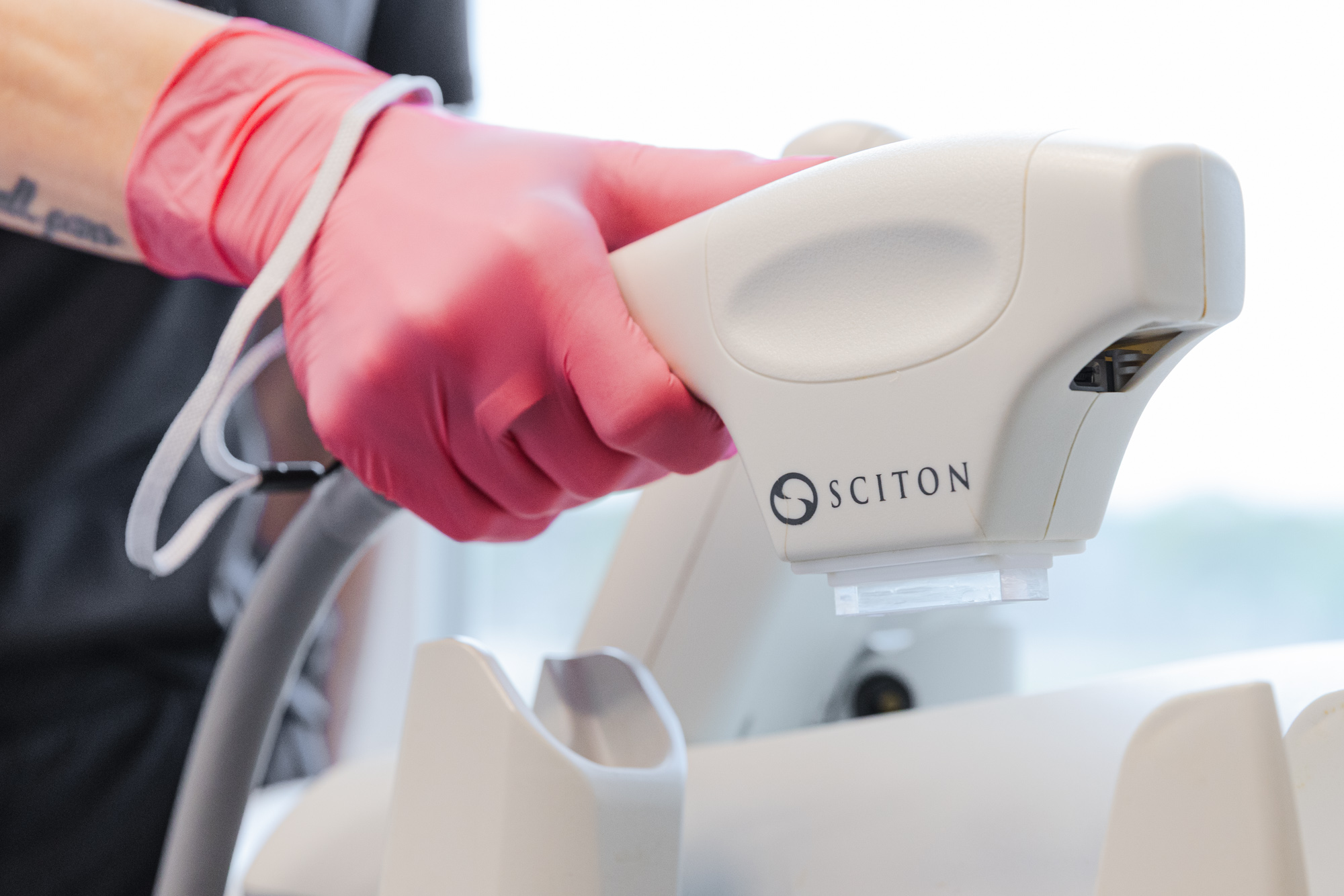
The BBL also simultaneously triggers collagen and reduces inflammation, supporting your skin’s health and cellular turnover.
At-Home Rosacea Care
Office procedures like our lasers help improve and manage symptoms of rosacea, but they don’t work alone. With the proper lifestyle and dietary changes, our dermatologists help patients find freedom from their flare-ups.
It’s best to build a skin care routine with a rosacea dermatologist in Frisco who has knowledge of ingredients that calm the redness. At McGuiness Dermatology, we have a range of products to enhance your rosacea treatment.
EltaMD UV Skin Recovery SPF 50
While we recommend avoiding direct sun exposure, we understand that it’s not always possible. In those cases, wearing sun protection can help protect your skin from harmful UVA and UVB rays. Everyone, not just rosacea patients, should wear sunscreen year-round. If you think about it, the sun never stops shining. EltaMD UV Skin Recovery SPF 50 uses gentle ingredients to protect and strengthen sensitive skin. Formulated with zinc oxide, centella asiatica, and a ceramide blend, this SPF soothes, protects, and alleviates skin-sensitivity issues. With its lightweight, absorbable texture, it blends quickly and easily into skin and neutralizes redness.
Plated Skin Science Intense Serum
Packed with a high concentration of exosomes and antioxidants, Plated Skin Science Intense Serum works for all skin types. While most well-known for its anti-aging benefits, the powerful ingredients also help to minimize redness and enhance luminosity and glow.
Sente Dermal Repair Cream
The Sente Dermal Repair Cream is an accepted product by the National Rosacea Society. Our rosacea dermatologist in Frisco recommends this hydrating cream to strengthen skin integrity and calm inflammation. With soothing antioxidant ingredients like green tea extract and vitamin E, it boosts your skin’s defenses against internal and external triggers like irritants, UVA rays, and free radicals.
Skinbetter Science Mystro Active Balance Serum
Another product that is approved by the National Rosacea Society is the Skinbetter Science Mystro Active Balance Serum. This serum addresses the appearance of redness, dullness, uneven pigmentation, and rough skin texture. These improvements result from ingredients like niacinamide, plant-based adaptogen, and squalane–to name a few. Full of antioxidants and moisture-retaining ingredients, this product supports your skin’s ability to adapt to stress and maintain balance.
ZO Skin Health Rozatrol
The National Rosacea Society also accepts ZO Skin Health Rozatrol for rosacea patients, thanks to its support for a healthy skin barrier. With ultra-mild exfoliation properties, ZO encourages skin cell turnover and reduces surface-level oil. Patients with rosacea-prone skin will see a restored radiance to their appearance with a more even skin tone and texture.
ZO Skin Health Hydro Soothing Mist
Our final product that is accepted by the National Rosacea Society is the ZO Skin Health Hydro Soothing Mist. This lightweight formula provides ongoing relief and hydration for your sensitive skin. Rosacea patients will notice that it immediately calms visible redness while also strengthening the skin’s barrier.
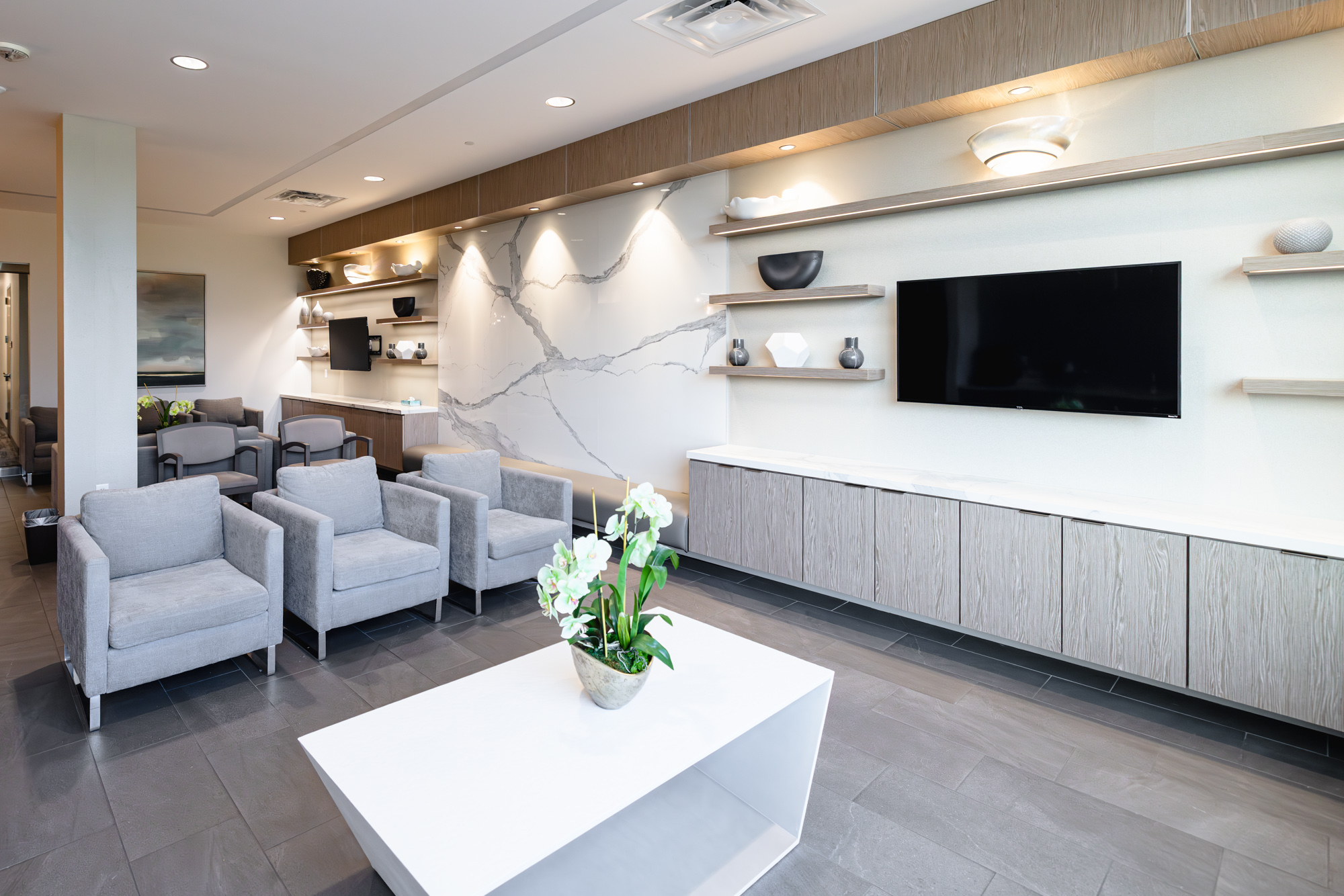
Find Your Solution at McGuiness
Don’t wait for your symptoms to worsen to see a rosacea dermatologist in Frisco. Identifying the triggers and finding the best treatment is the first step to soothing irritated skin and managing symptoms. To get started, try our online treatment planner. Once we receive your submission, a member of our team will reach out with available appointment times and potential treatment options.
To start in person, request a consultation.


